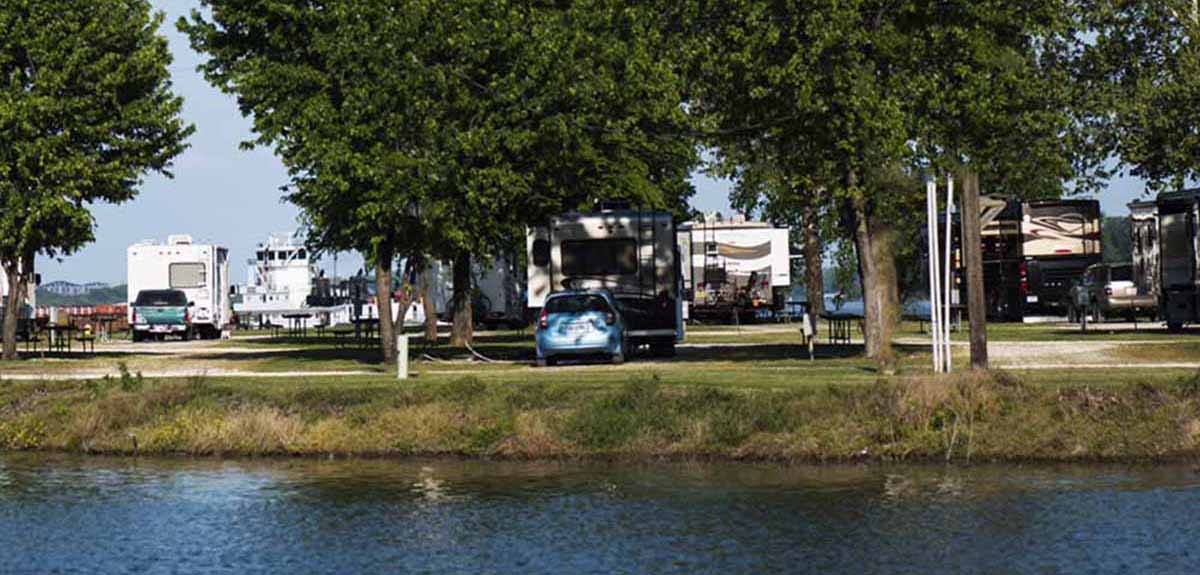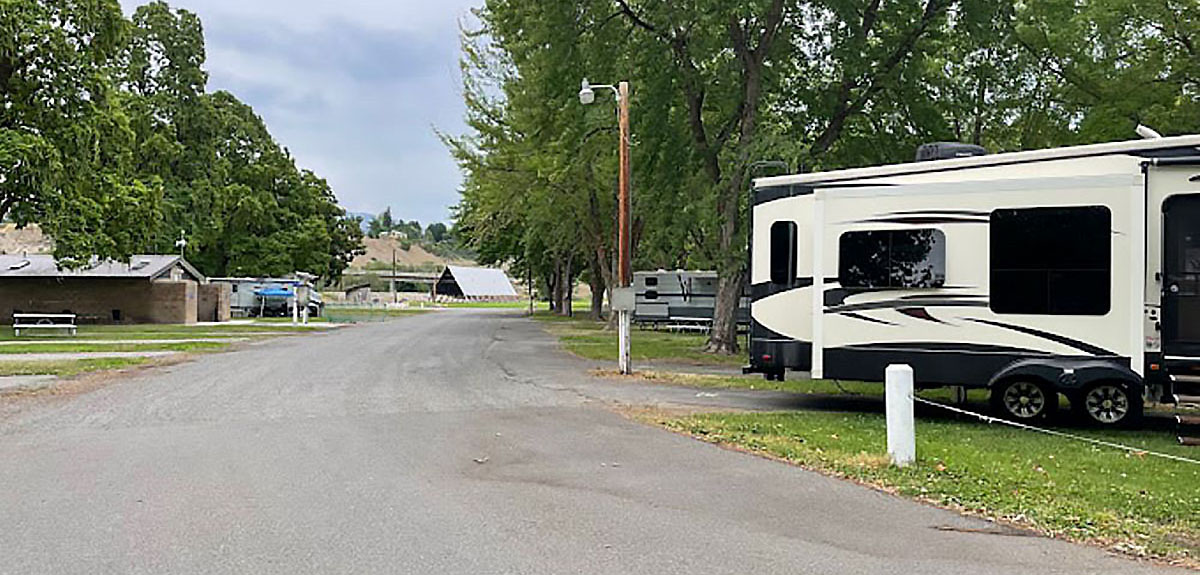Firearms Compliance for RVers
A Guide for RVers
Image Caption:
Firearms Compliance for RVers
To some people, traveling with firearms is just as normal as traveling with pets. Many motorhome owners enjoy the sporting aspects of firearms and therefore want to travel with their competition or hunting firearms. Others want to have a personal protection weapon while on the road to feel safe from either animal or criminal attacks. We don’t want to be political and we want to make it clear that we are not offering legal advice because we are not lawyers. Also, our explanations of firearms laws are not intended to be legal interpretations or restatements of the law.
Even though we are not lawyers, we will help you decide the best way to travel with firearms in your motorhome, should you choose to do so. Due to the complexity of this topic we will not be able to tell you exactly how or where you can travel in your motorhome, or with which weapons you can take with you. It’s just not that easy, but we will point you toward some credible sources that will help you along the way. For this article we are only focusing on travel in the USA. If you plan on hunting in Canada or driving to Alaska and going through Canada, this presents additional challenges that are outside the scope of this article. Mexico is yet another complicated topic we will not be covering.
Transporting or Concealed Carry?
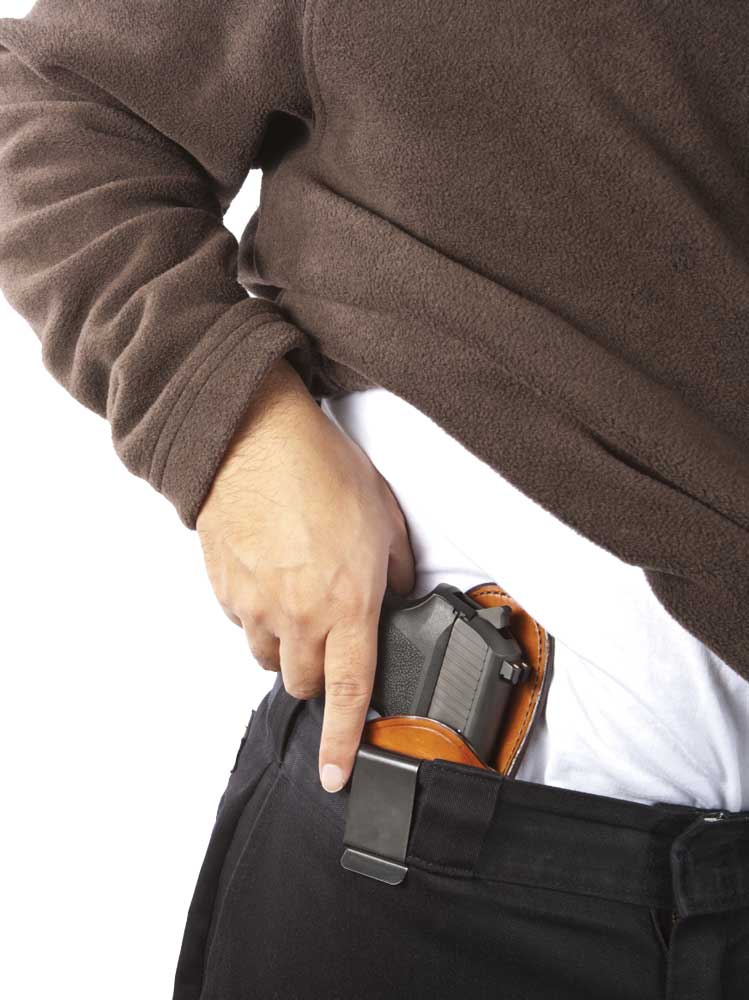
If you decide to carry a weapon (which means anything other than keeping it in a locked case), a whole new set of laws come into play with terms such as concealed carry versus open carry becoming very important. It’s a virtual mine field of laws and it varies tremendously from state to state, and even within a state. Before you decide to carry a weapon, open or concealed, make sure you know the laws and, if required, obtain a concealed carry permit. In some states, open carry is legal and no permit is required; other states are not so friendly when it comes to carrying a weapon of any type. Following the laws to the letter will avoid felony charges.
The first distinction is the difference in traveling with a firearm, which is transporting, versus traveling with a concealed carry weapon on or off your body in a manner that is readily accessible and/or loaded. These are very different ways of transporting firearms involving various types of weapons and, of course, the laws covering transporting versus concealed carry are also very different. Usually if someone is carrying or concealing a weapon it is (but is not always) a handgun. A handgun, however, can be transported in a manner that is not considered concealed carry if you follow the right rules.
Although it is commonly thought that a motorhome is an extension of the “home” (and exempt from police searches without a warrant), when those motorhomes are on the road being used for transportation they are treated exactly like a car or truck. When a car or motorhome is on the road it is only subject to “probable cause” as the legal standard for searching.
The safest bet when traveling with firearms (long guns or handguns) is to contact the state police, or the attorney general for the state(s) you are traveling through and make sure you completely understand the laws as they pertain to your specific situation (concealed carry or otherwise) and type of gun, magazines and ammo. Most states have websites with this information as well. Another great resource is www.concealedcarry.com, where you will find an interactive map that provides a lot of information about the laws in all states. They also offer a free app called “Concealed Carry Gun Tools” to help navigate the maze of legally carrying a concealed weapon as you travel in the USA on a state-by-state basis.
Who is Eligible?
We are covering the topic of transporting legally owned firearms, which means you must be allowed to own a firearm first. Federal law requires that a person must be 18 years old to purchase a “long gun” or long gun ammunition, and 21 years of age in order to purchase a handgun or handgun ammunition. Some states require owners to be 21 years old to purchase, own and possess long guns, so even the legal age is a topic of disagreement among the various states. There are several other situations that prevent gun and ammunition ownership: a felony conviction, illegal alien status, a dishonorable discharge from the military, an individual being mentally defective or who has been committed to a mental institution, and an individual convicted of a domestic violence offense.
Of course, drivers should always follow all traffic laws any time they are on the road. When you are carrying a weapon, one way of avoiding a potential lengthy delay, (explaining why you have a weapon to an officer) is to drive in the safest way possible while obeying all traffic laws. Speeding, distracted driving or road rage incidents have no place on the road at any time, so avoid anything that could cause you to be in a position of having to explain why you are legally carrying or transporting a weapon.
The Right to Bear (and Transport) Arms
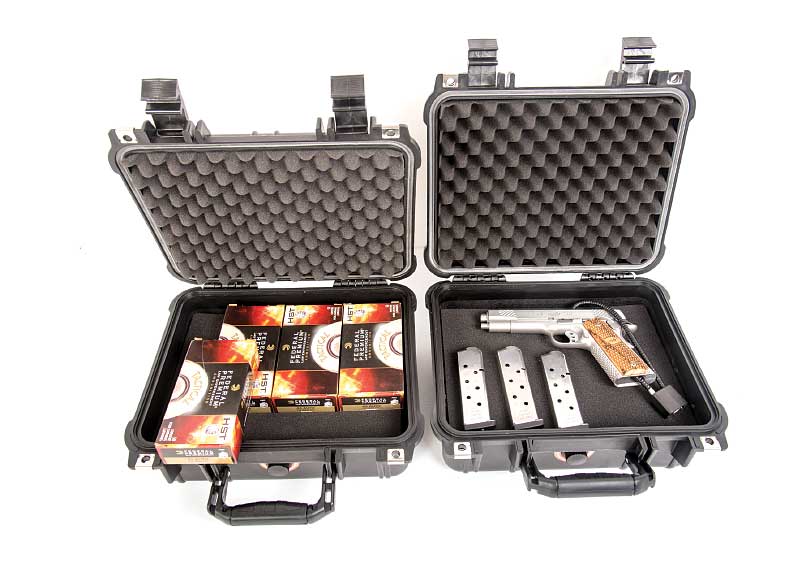
Conforming to the FOPA is difficult in a motorhome because the entire motorhome is accessible to its occupants. Separate, locked cases must be kept out of easy reach, and the key(s) should be placed in an area that is not easily retrieved by the driver or passengers.
The first and most common law that is often mentioned regarding the transportation of firearms is the 1986 Firearm Owners Protection Act (FOPA). Section 18 of this act is known as the safe passage act. In summary, what the FOPA provides is the ability for certain people (legal owners) to transport firearms from one state where they are allowed to possess that weapon, to another state in which they can legally possess it.
To legally transport a firearm in compliance with the FOPA, it should be unloaded and locked in a case, and not easily accessible to the occupants. The ammunition also needs to be locked in a separate case and not easily accessible. Since the entire “house” of the motorhome is open to the occupants, this is more difficult than a car, where operators can lock the items in the trunk, making them inaccessible. The term “unloaded” is also subject to interpretation, but the common logic is that the magazine(s), and the weapon (including the chamber or cylinder) need to be empty. Unloaded could also mean no loaded speed loaders, moon clips, magazines, etc.
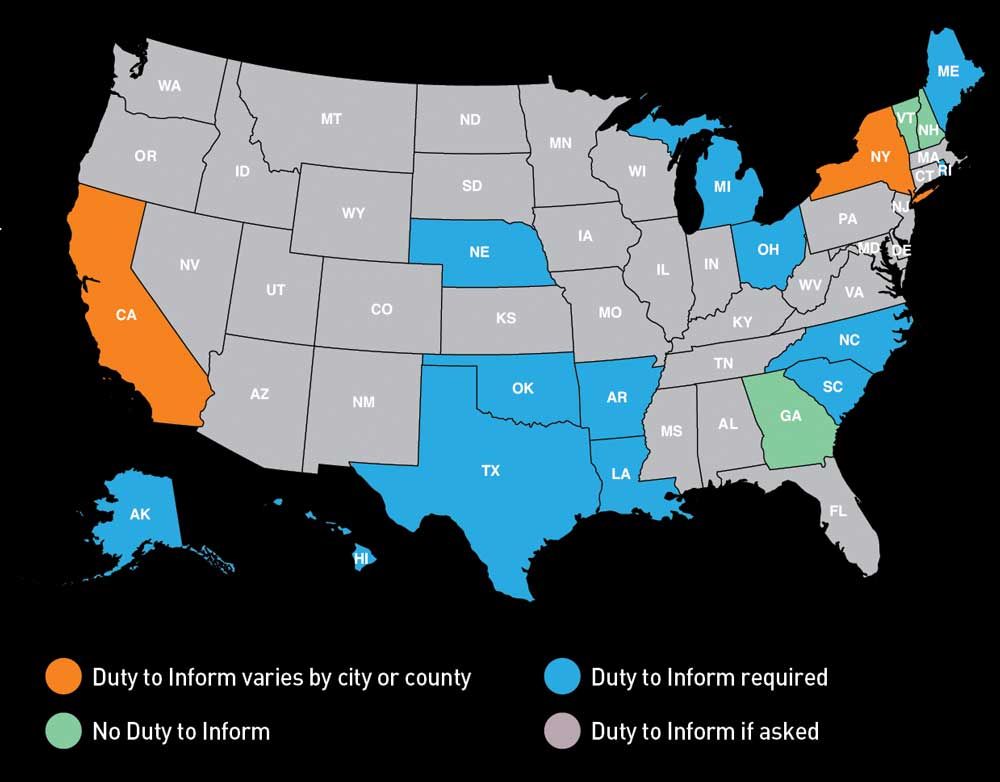
Some states have specific laws in place requiring you to inform an officer if you have a concealed carry permit and/or gun. Pay special attention to states in which you will be traveling, and refer to www.concealedcarry.com for up-to-date info.
Local Laws
Transporting your weapon through some states gets tricky if you are passing through areas with stringent gun, ammunition and/or magazine capacity laws, such as New York, Massachusetts, California, Maryland, New Jersey and Washington D.C., particularly as it pertains to handguns. Most interpretations of FOPA state that a trip through these states needs to be uninterrupted, meaning you can’t stay overnight while in possession of the firearm. That means no overnight camping or hotel stays in these states where possession of the weapon can be an issue. It would also be a great idea to keep a copy of the FOPA laws in the locked case with your firearms just in case the officer is not familiar with them.
State laws can still have implications as well, so this is why it’s important to know the law in every state you plan to travel. If you have any other documentation that supports your legal carry, such as a concealed carry permit, make sure you always have those documents with you, plus your state laws and/or the state you are traveling to and their laws pertaining to weapons. Documentation of this type may not always help, but it does show the officer that you are attempting to follow the law and could help you in some circumstances.
High-capacity magazines present another challenge if you are passing through certain cities or states that have stringent laws. It’s important to be aware of those laws and make sure you comply. A pistol with a 15-round magazine (or certain types of ammo) that is legal in one state may not be in another. If you are a firearms competitor, some areas even have laws that pertain to you and there are additional requirements — such as a specified window of time before and after the event, and requirements that you be able to document this event — as it relates to your trip.
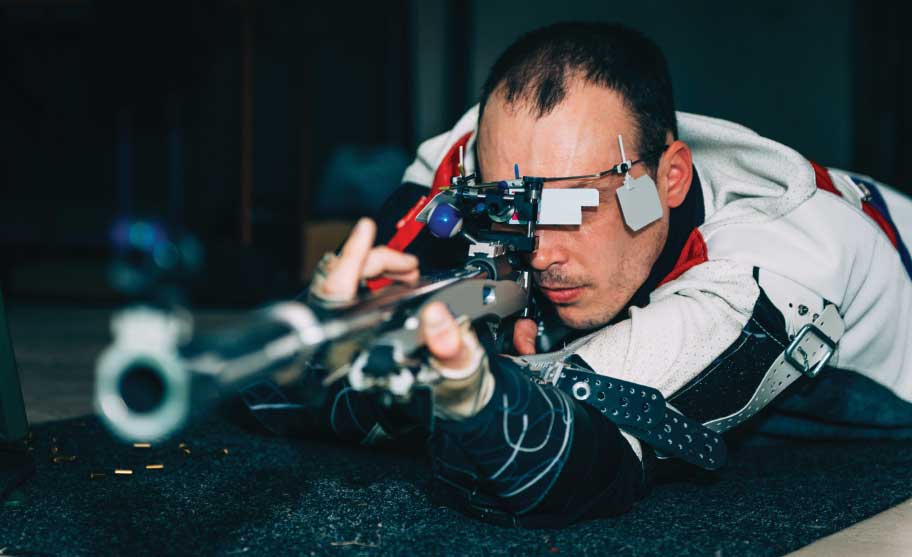
Firearms Competitions
Throughout the U.S. there are numerous types of firearms competitions and events, just as there are with other sports such as golf, softball, soccer, etc. Competitions include Trap, Skeet, Precision Rifle Series (PRS), IDPA, F-Class, FTR, Smallbore, Silhouette, 3-Gun, Benchrest, Western, Muzzle loading and many more. The National Rifle Association (NRA), which is only one organization that conducts shooting events, sanctions more than 11,000 competitions and crowns 50 national champions every year. According to the NRA, there are more than 300 colleges/universities that offer shooting programs for students. Shooting sports may not be as popular as football or basketball, but they are common. Of course, the Olympic games feature shooting events in both the summer and winter events, and it is estimated that there are more than 390 million firearms in the U.S. With numbers like these, it’s obvious why the topic of traveling legally with a firearm is an important one. Many shooting ranges even have RV parking on-site, which makes it a perfect combination to travel to these competitions in a motorhome.
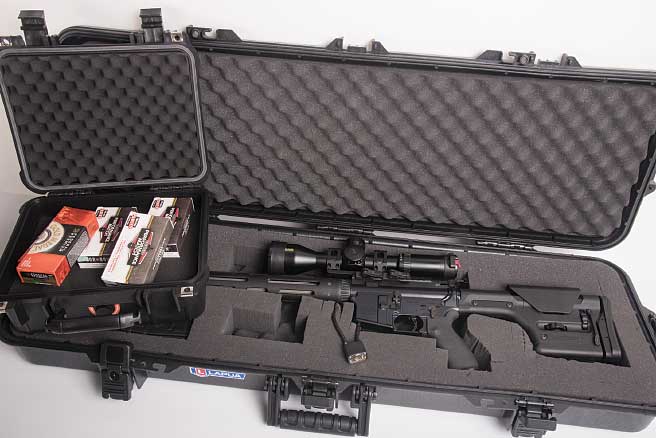
When traveling with specialized weapons such as a competition rifle, there may be additional restrictions involved in transportation, depending on the state and city. Since this rifle has a threaded muzzle device and it has high-capacity magazines, it could be problematic in some areas even though it is a small-caliber semi-automatic rifle, which is considered legal by most states.
Depending on the state that issues your concealed carry permit, it gives you certain rights of reciprocity in other states. Make sure you check out the interactive map previously mentioned so you can understand where you can and can’t carry a weapon. As an example, Maryland (as well as California, Illinois and several others) doesn’t recognize any other state’s carry permits. Maryland is one of the states that issues on a “may” basis and “may” issue residents a carry permit if they have a “good and substantial reason.”
Simply possessing a carry permit doesn’t give you the legal right to carry that weapon everywhere within that state. For example, many state or national parks have specific restrictions, such as weapons being prohibited inside certain buildings, or even in parking lots, so those laws have to be followed. It is your responsibility to know these laws and follow them on a state-by-state and city-by-city basis. Normally, areas or buildings that have special restrictions are posted with signage, but the absence of a sign prohibiting a firearm is not always permission to have one there.
Stay Current
Another thing that makes carrying a weapon or transporting one more difficult is that laws and reciprocity agreements are constantly changing; therefore, it is essential to check for these updates before traveling. Another important law to understand is when you are required to inform law enforcement that you are carrying a weapon. These laws are commonly referred to as “Duty to Inform Laws.” There are currently 13 states that require that you notify law enforcement (during any encounter, such as a moving-violation stop) that you have a weapon, even if they don’t ask. The majority of states require that you notify law enforcement only if asked, while three states don’t require you to inform an officer. Please be aware that California and New York have many variations of the notification laws which vary by city and county. This map can be viewed above, and at www.concealedcarry.com.
Do the Research
While we all wish there was a simple answer to legally carrying or transporting a firearm, this is a topic that is not simple at all. Use the resources mentioned previously to fully research the laws in the states you are traveling through to avoid any potential problem. After contacting the state police and/or the attorney general’s office/webpages, if you are still not comfortable, get the opinion of a firearms attorney. Remember, we at MotorHome are not attorneys, and the tips we have provided should not be considered as legal advice or interpretations of the law. You may think that hiring an attorney is expensive or overboard, but if you make a mistake and are charged with a felony, a small consultation fee up front with a good attorney will be a small price to pay.
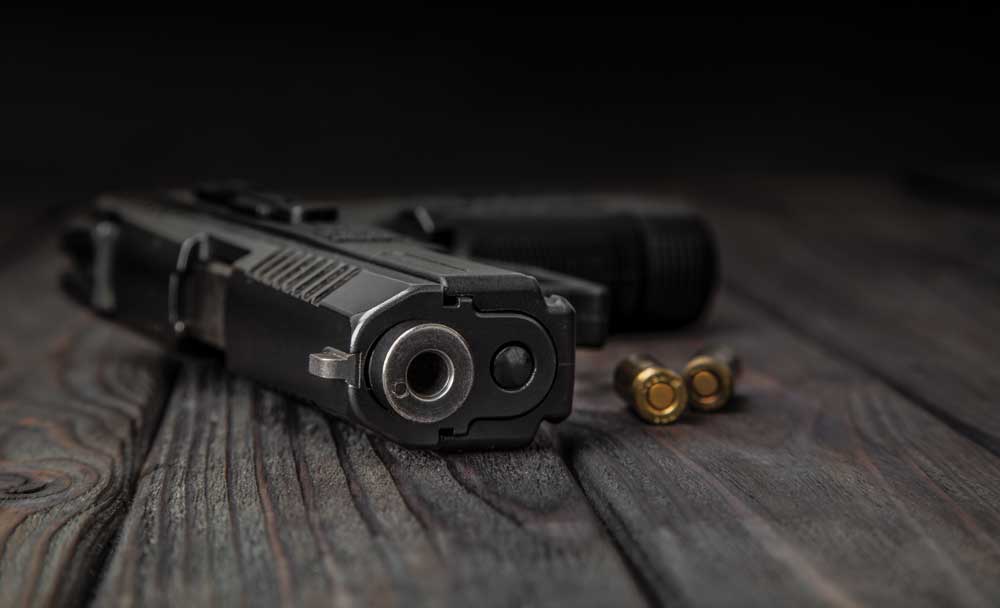
“To legally transport a firearm in compliance with the Firearms owners protection act, it should be unloaded and locked in a case, and not easily accessible to the occupants. The ammunition also needs to be locked in a separate case and not easily accessible.”

